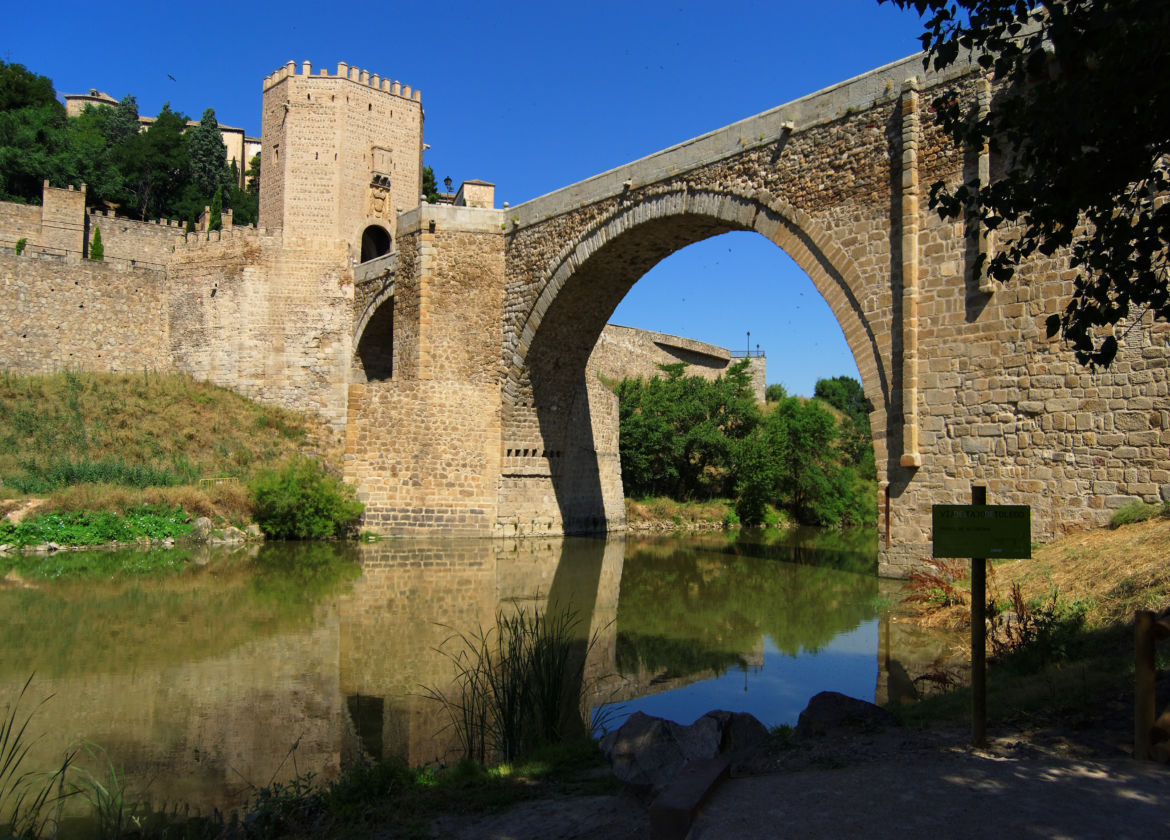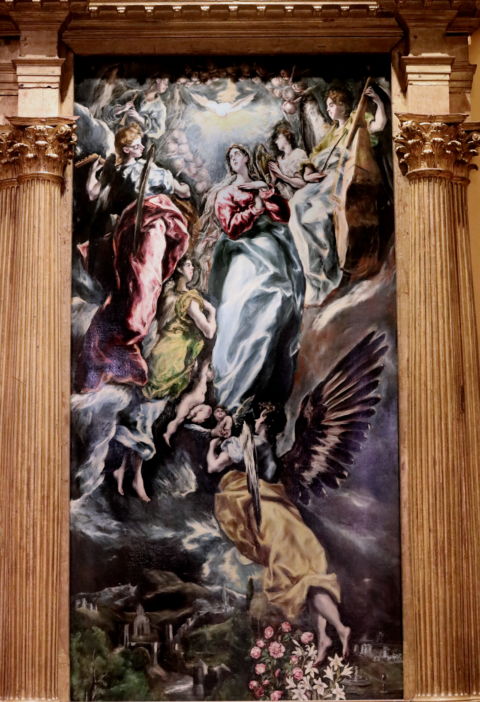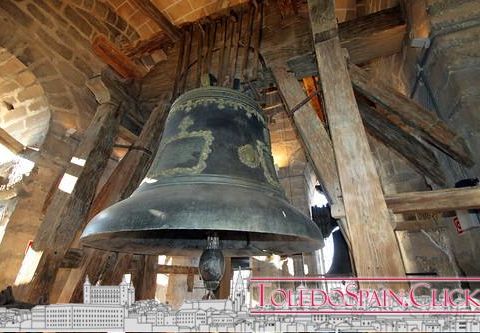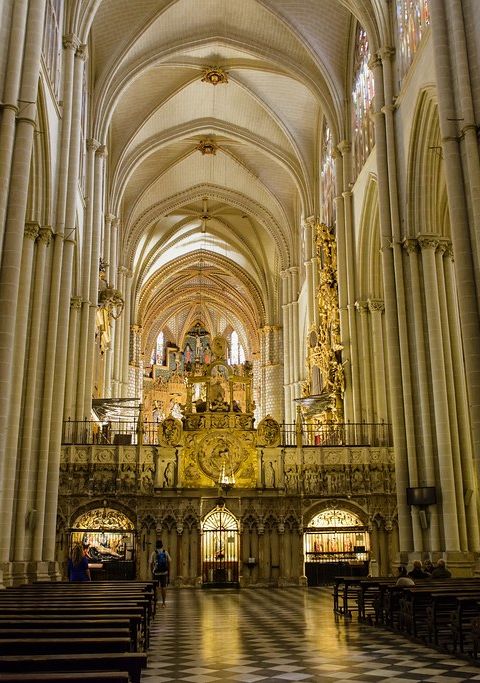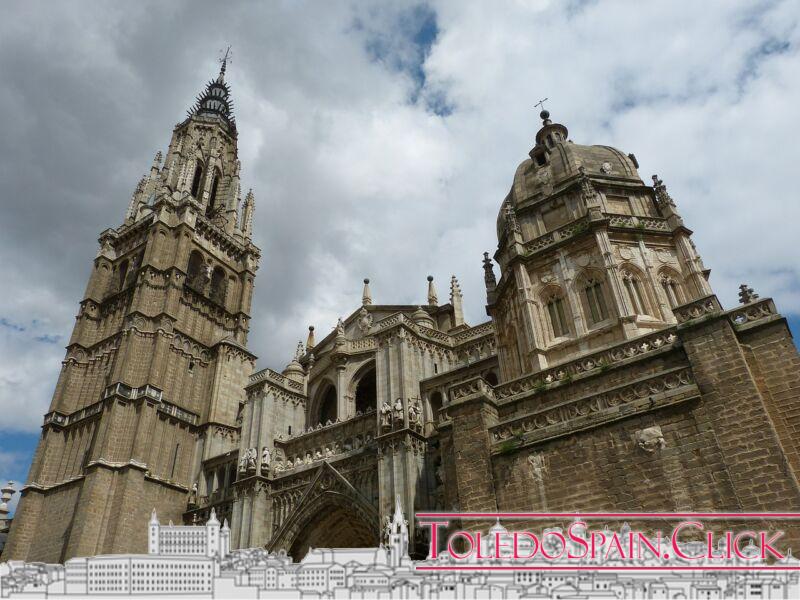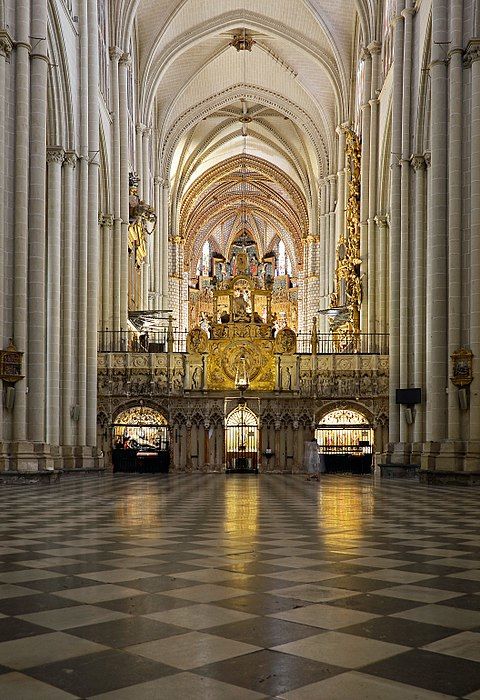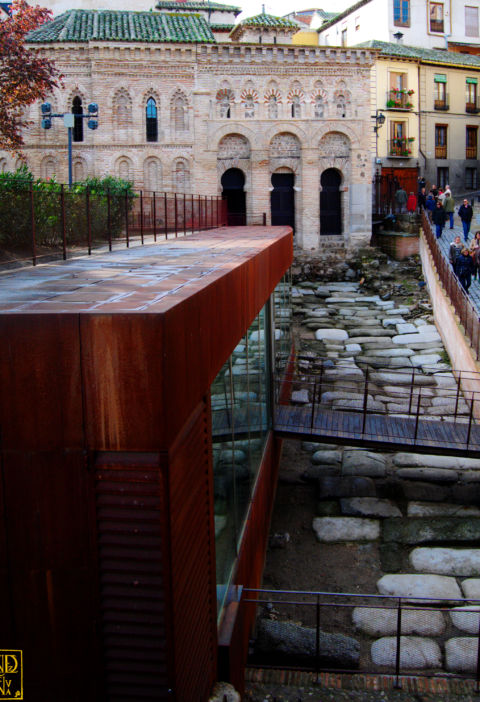Alcantara, from Arabic (al-qantarah, “the bridge” ).
Alcantara Bridge. You will agree with me that once we leave the train station on the right when we come along the Paseo de la Rosa and, suddenly, we find the fascinating picture of the splendid and majestic Alcázar and at its feet part of the Toledo wall and as we advance the bridge we call Alcántara appears over the Tagus River, this is a view that does not leave anyone impassive and no matter how much we know it and see it every day, we cannot take our eyes away from this amazing image of day and magic at night, we cannot look away from this amazing image of day and magic image of night. 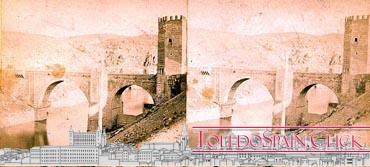 Interior of Alcantara Bridge Tower, as it was in 2011 (cannot be visited).
Interior of Alcantara Bridge Tower, as it was in 2011 (cannot be visited).
See more photos of the interior of the Bridge in this link.
Built in the 3rd century by the Romans, this bridge was crossed by the road that linked Emérita Augusta (Mérida) with Cesárea Augusta (Zaragoza). This makes us think that from the first centuries of Roman domination, Toledo, the old Toletum must have been a very important city, as the dimensions of the remains of what was the Roman Circus indicate.  Puerta de Alcántara in Toledo. Due to the passage of time and perhaps the bad use made of the bridge, in the 10th century it had to be restored by the Arabs, who gave it the name of (” al-qantarah”, “the bridge” ) and they also used it to link Cordoba with Zaragoza. But the marvellous picture does not end here, since if we continue advancing we can contemplate on a promontory to the left over the bridge the castle of San Servando, a precious enclave that is also linked to the bridge and has always served as a protection.
Puerta de Alcántara in Toledo. Due to the passage of time and perhaps the bad use made of the bridge, in the 10th century it had to be restored by the Arabs, who gave it the name of (” al-qantarah”, “the bridge” ) and they also used it to link Cordoba with Zaragoza. But the marvellous picture does not end here, since if we continue advancing we can contemplate on a promontory to the left over the bridge the castle of San Servando, a precious enclave that is also linked to the bridge and has always served as a protection.  Views from Puente de Alcántara.
Views from Puente de Alcántara.  Inscription on Puente de Alcántara. There is an inscription that tells us that the bridge was completed in 997 AD by Alef, son of Mahomat Alamerí, warden of Toledo, who had been appointed by Almanzor, therefore, we can consider it as one of the oldest monuments or standing buildings in Toledo, as the Mosque of Cristo de la Luz dates from 999.
Inscription on Puente de Alcántara. There is an inscription that tells us that the bridge was completed in 997 AD by Alef, son of Mahomat Alamerí, warden of Toledo, who had been appointed by Almanzor, therefore, we can consider it as one of the oldest monuments or standing buildings in Toledo, as the Mosque of Cristo de la Luz dates from 999.  Bridge of Alcántara and Remains of the Artificio de Juanelo around 1864. Photograph of Alfonso Begue in Toledo Olvidado.more old photos of the bridge in this link (Toledo Olvidado)Later and due to a great flood that partially destroyed it, King Alfonso X ” the Wise” , ordered an almost complete reform in the middle of the 13th century. The great tower overlooking the city belongs to this period. The Catholic Monarchs also ordered this tower to be reformed, turning it into a kind of military fortress that would also have to be used to collect the “Portazgo” tax, from which the Toledans and neighbours of their mountains were free, as I have been saying in other chapters. On the solid walls of the tower is the coat of arms of its Catholic majesties, but the symbol of the Church is also present, with a set of white plaster stone that represents the imposition of the chasuble to San Ildefonso.
Bridge of Alcántara and Remains of the Artificio de Juanelo around 1864. Photograph of Alfonso Begue in Toledo Olvidado.more old photos of the bridge in this link (Toledo Olvidado)Later and due to a great flood that partially destroyed it, King Alfonso X ” the Wise” , ordered an almost complete reform in the middle of the 13th century. The great tower overlooking the city belongs to this period. The Catholic Monarchs also ordered this tower to be reformed, turning it into a kind of military fortress that would also have to be used to collect the “Portazgo” tax, from which the Toledans and neighbours of their mountains were free, as I have been saying in other chapters. On the solid walls of the tower is the coat of arms of its Catholic majesties, but the symbol of the Church is also present, with a set of white plaster stone that represents the imposition of the chasuble to San Ildefonso.  Puente de Alcántara y Alcázar de Toledo.If the bridge of Alcántara could speak, it would make us relive the ” Dark Night” of San Juan de la Cruz, it would undoubtedly narrate innumerable conversations in it. Being the obligatory passage towards the railway station and the neighbourhood of Santa Bárbara, he would tell us about the sorrows and joys of the soldiers who served their military service in the Infantry Academy, in many cases in love with a beautiful woman from Toledo and without a doubt he would put a face to that cadet who, looking at the Tagus, would say: ” Happy are you who follow the course without leaving the bed!.
Puente de Alcántara y Alcázar de Toledo.If the bridge of Alcántara could speak, it would make us relive the ” Dark Night” of San Juan de la Cruz, it would undoubtedly narrate innumerable conversations in it. Being the obligatory passage towards the railway station and the neighbourhood of Santa Bárbara, he would tell us about the sorrows and joys of the soldiers who served their military service in the Infantry Academy, in many cases in love with a beautiful woman from Toledo and without a doubt he would put a face to that cadet who, looking at the Tagus, would say: ” Happy are you who follow the course without leaving the bed!.  Puente de Alcántara and Castillo de San Servando.The bridge would tell us about the fratricidal struggles between Pedro I ” the Cruel” and his stepbrother Enrique II of Trastámara ” the one of the mercedes” that took place partly in the castle of San Servando, would bring us closer to the legend of the Arroyo de la Degollada through which the captain of mesnaderos Rodrigo de Lara wanted to escape by taking his beloved Zahira to the rump of his horse. The bridge would tell us about the countless floods he endured when the river was the father Tagus. Today the lovers put locks in any anchorage of the bridges, but the one of Alcántara is jealous guardian of many promises of love -some fulfilled and others not- that to the being words, as much the wind as course of the river took them away. We would know of many treatments of cattle, cereals, olive tree and wines as here should be done on the solidity of its structure.
Puente de Alcántara and Castillo de San Servando.The bridge would tell us about the fratricidal struggles between Pedro I ” the Cruel” and his stepbrother Enrique II of Trastámara ” the one of the mercedes” that took place partly in the castle of San Servando, would bring us closer to the legend of the Arroyo de la Degollada through which the captain of mesnaderos Rodrigo de Lara wanted to escape by taking his beloved Zahira to the rump of his horse. The bridge would tell us about the countless floods he endured when the river was the father Tagus. Today the lovers put locks in any anchorage of the bridges, but the one of Alcántara is jealous guardian of many promises of love -some fulfilled and others not- that to the being words, as much the wind as course of the river took them away. We would know of many treatments of cattle, cereals, olive tree and wines as here should be done on the solidity of its structure.  Bridge of Alcántara in Toledo.Two arches have the bridge, the tower mentioned above and another triumphal baroque style in front of the Castle dating from 1721, both have to be crossed and between them have been kept hundreds and hundreds of stories and secrets of as many Toledans and Toledans since another definition of the word Alcántara is: ” Big box to keep the fabric that is being worked, in the velvet looms”. Declared a national monument in 1921, all those secrets will be kept here until at the end of time, -according to legend-, as in that ” Dark Night” , the Toledo bridge of Alcántara will succumb to the rigors of the Tagus. * Video created by Toledospain of the interior of the tower of the Bridge of Alcántara when we agreed to take photos for the book Toledo Secreto. Text: Carlos Dueñas ReyFotos: ToledospainSeguro que
Bridge of Alcántara in Toledo.Two arches have the bridge, the tower mentioned above and another triumphal baroque style in front of the Castle dating from 1721, both have to be crossed and between them have been kept hundreds and hundreds of stories and secrets of as many Toledans and Toledans since another definition of the word Alcántara is: ” Big box to keep the fabric that is being worked, in the velvet looms”. Declared a national monument in 1921, all those secrets will be kept here until at the end of time, -according to legend-, as in that ” Dark Night” , the Toledo bridge of Alcántara will succumb to the rigors of the Tagus. * Video created by Toledospain of the interior of the tower of the Bridge of Alcántara when we agreed to take photos for the book Toledo Secreto. Text: Carlos Dueñas ReyFotos: ToledospainSeguro que
if ( td_screen_width>= 1140 ) {
/* large monitors */
document.write(‘

